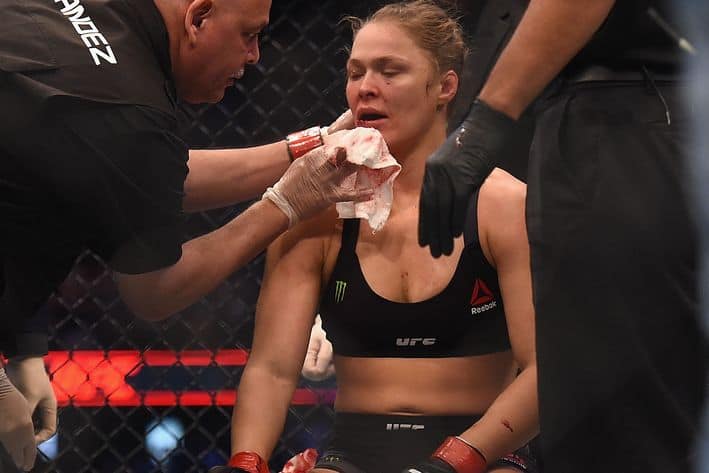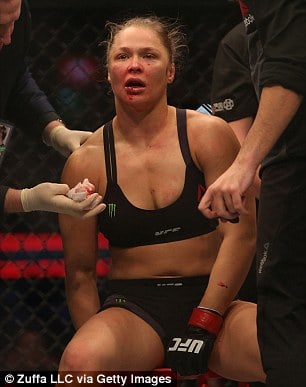
Pain affects our esteem
Pain science is a hot topic. Our brain interprets inputs, perceives something as a threat, and outputs pain as a protective measure. The way we feel about our injured part, though, can be even more damaging. Far beyond placebo and nocebo effects, pain is a constant reminder of being less-than, and what you can’t do.
In Rhonda Rousey’s much publicized loss to Holly Holms, for example, the sting of a champion’s defeat was made much worse by having several teeth dislodged. Every time she chews she’s haunted of that kick. In the brief moment she lives in the present and is disarmed, one false rest of the head brings everything back in waves. Couple this with not being fully able to do what you love to do to regain your sense of self-esteem, and the result is crippling. It’s no wonder why we want to numb ourselves from pain.
The way we move, or can’t, affects our self-image. Less than in one way seeps into all ways. The sadness and remorse we feel for being rendered incapable blurs our once reliable sense of control. Athletes share a particularly devastating reaction to injury. Their body is the most heralded thing about them, and they’re not lost on its value.
We take our health and functioning parts for granted until they’re gone.
Personally, blowing my knee out was devastating, both to my system and my sense of self. There’s the hobbling in the month or so preceding surgery. Then the incapacitation and routine vomiting immediately following surgery. This is where the tease comes in. After about 72-hours you start to feel ‘better’. You’re not throwing up. You can sit up and smile and start to enjoy living without constant nausea and pain. It worked, you think. I’m on my way to recovery! You can start to shuffle around your house. But then you have to get in the car to go to physical therapy. This is hard. You have to figure out how to get into the car. With each new attempt at normalcy, you realize there’s still such a long way to go.
It’s defeating. Improvements reveal new setbacks. Your new normal is one of reduction and remnants. You become a victim of your own circumstance. The demanding will do lots of research and self-experimentation as the number of therapy sessions fail to coincide with the amount of expected improvement.
Not being able to do something makes you really want to do something.
Unless you can allow that something to shift to something different, you’ll get stuck in that self-image of degradation.
The lack of satisfaction in the way my body felt and performed once I was dismissed and ‘deemed OK’ by the medical system led me into the world of rehabilitation. My impact as a cooperative fixer far outweighs any significance I had as a competitive destroyer. Living in lowness forces you to reconsider and re-evaluate, and at the very least takes you some place new.
Gratitude for parts that work and heal will go a long way in treating yourself as something that should be treasured.
Disliking pain can either lead us to disliking ourselves or disliking what we’re doing. Looking at the latter will eventually build us back up. The same pain that signals something’s wrong can also be the strongest impetus for change.




